evaporation
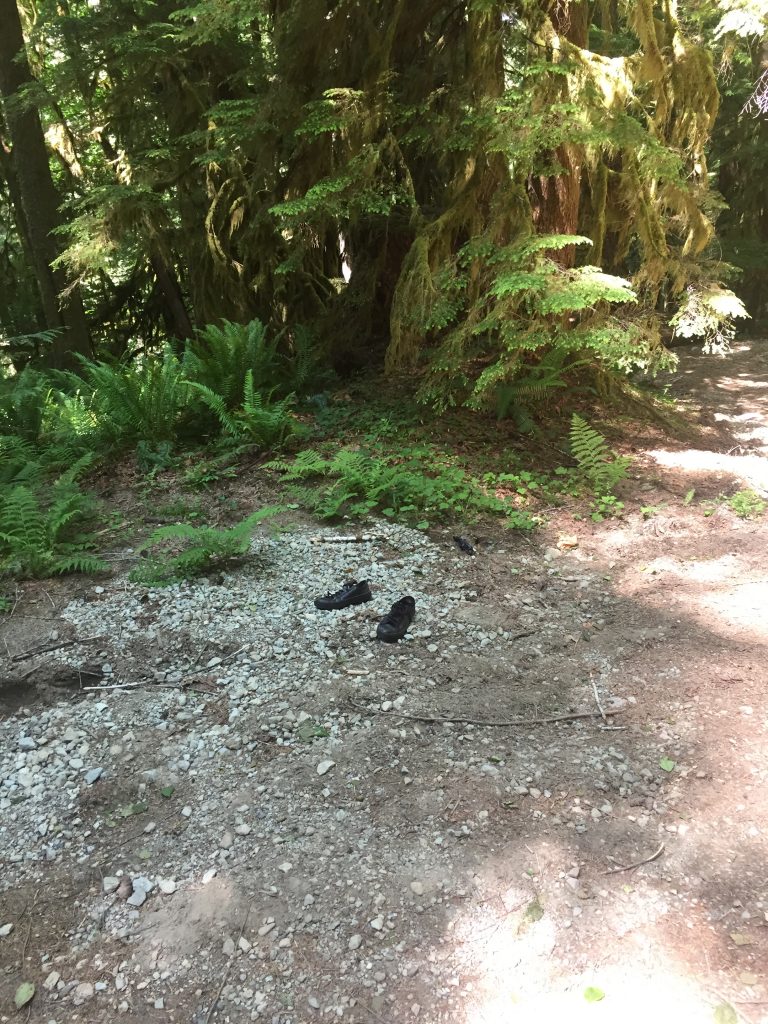
The traveler explores the American Wayside, verifying the contents of a mysterious guide written by a man with whom he shares a likeness and name. Excerpts from ‘Autumn by the Wayside: A Guide to America’s Shitholes’ are italicized. Traveler commentary is written in plain text.

I’m not a traveler at all, not like you. I was born in Wisconsin and I never left the state. All the others were born everywhere else, each one in a different state, I think, and I don’t think they left. They’re out there now but we never meet. Each time one of us dies another is walking by an empty lot and the empty lot me knows all about the dead ones and it makes it hard to think. Harder each time.
It does make it easier to leave. I never tell anyone I’m going.
But it starts in the empty lot because it’s quiet there and most people leave you alone and it takes some time to deal with the baggage of the others and by the time we get to the end there’s a lot of anger. Some of us had it better than others for no reason at all. The world just had it out for some of us.
And then things start to line up. Your face appears, we start to die, and with each ending the narrative clears a little until it’s just the last time we died and the path that brought us to the empty lot. All of our combined histories converge into something that’s like an arrow and that arrow points in the opposite direction of wherever we were heading at the time: back toward the book we finished editing years before.
Autumn by the Wayside
I find you each time the same way I found you the first time: I flip through Shitholes and visit the page I land on. We all came to different conclusions when we edited the book based on information given to us by the publisher and by our own, narrow lives so, even though we always stop on page 131, we always visit a different place.
And you’re always there.
Here’s the thing: we all work for the same publishing company. They can’t not know.
They can’t not know.
-Editor
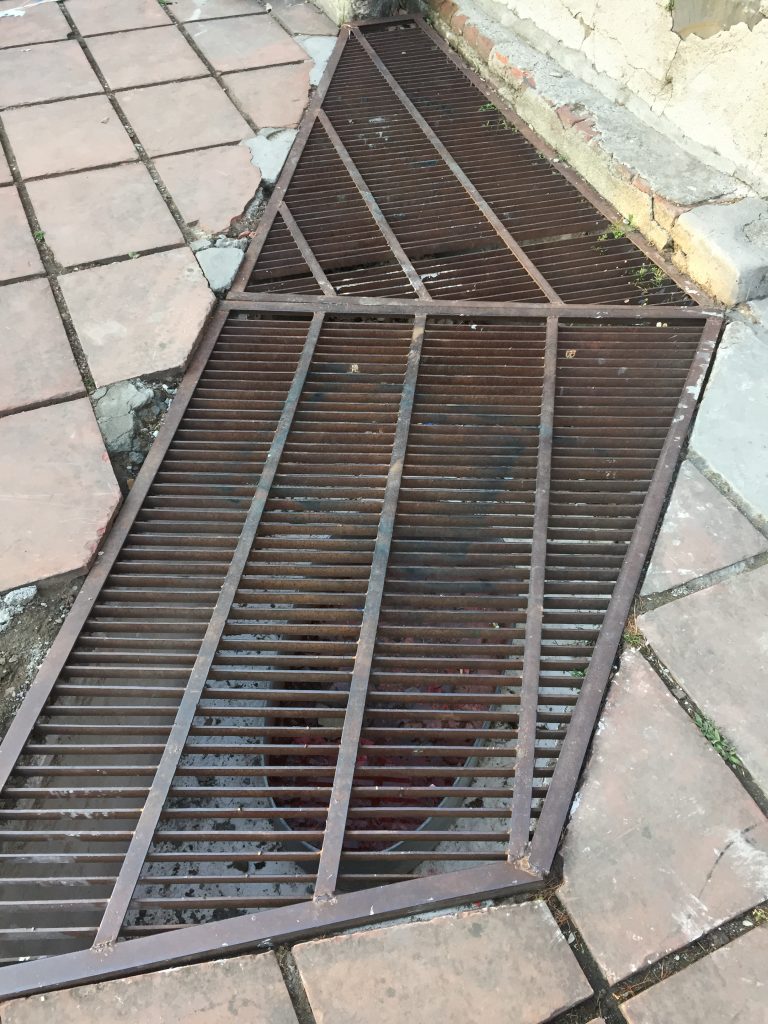
‘There are many strange things to be dredged from the deserts of Nevada, but ‘The Neon Mound’ warrants an entry for being both relatively easy to find and relatively safe upon discovery. It is easiest to find at night, when the cooling desert air sets the old neon patterns clicking like a frozen lake in the sand and when the lights are most visible under their sheer draping of earth. It is safest when viewed from a distance, as rumor suggests the wind creates deep, secret pits under the glass and that unwise travelers will tumble through, finding the smooth web turns quickly jagged under any weight.
‘The Neon Mound’ is most likely a historical dumping site for Vegas’ flickering signage, but this assumption fails to cover some of the stranger aspects of ‘The Mound.’ What force could have changed the shape of the old glass so that it exists, now, like a crumpled tin can? What current electrifies the sand, so that onlookers can step barefoot among its roots as they flash like a distant storm?
Vegas will not touch ‘The Neon Mound,’ neither to preserve nor destroy it. It flickers on the outskirts, like a forgotten candle, burning low- a mundane thing with dire potential.’
The Editor is quiet for a day and then she starts talking. It’s all nonsense, at first- gibberish in a conversational tone. It doesn’t stop, not until she’s sleeping and even then it sometimes breaks the surface of her dreams so that I wake to her whispering in my ear. After a few days the words rearrange themselves into something I understand, the Editor’s base instincts overriding the disease. She’s been telling me about her life and it’s taking some time because she remembers each loop, now and she sees them side by side.
‘The Neon Mound’ is not the firework show I expected. It pulses intermittently, blue and white. It calms the Editor’s speech and brings her to the conclusion, which is to say, it brings her to her experience in the interim.
-traveler
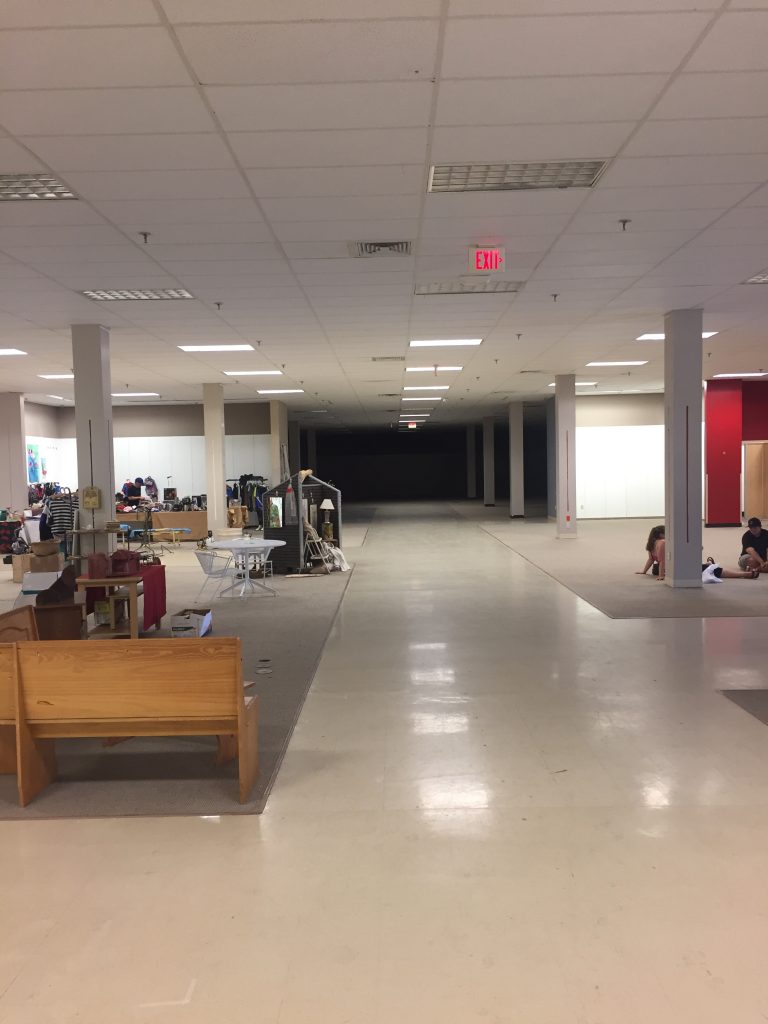
The Editor stands like a scarecrow in a field of some unknown plant. She stands with the rigid stillness of a predator, a short line on the horizon. It could be anything out there, but I know it’s her. I had stopped to eat a sandwich from a gas station deli. It oozes mustard and oil into the napkin, leaving a smell that will be on my hands for days. The sandwich ages poorly. It begs to be eaten. I don’t know what to do. I am rigid with the stillness of prey.
The line of her body shudders with a step. It could be any movement, but I know it’s a step- a step in my direction. A small stream of mustard now runs between my fingers and over the inside of my palm, the glacial mass of it melting between folded slices of sun-warmed salami. She is walking this way. She wonders if I will run and I find, in that moment, I’m wondering the very same thing.
‘‘The Interactive Fight-or-Flight Activity Area’ is like a haunted house in that it’s designed with the express intention of funneling would-be customers into a series of interactions that will activate their most basic instinctual response to threat. Philosophically it exists on the same spectrum as a your community meditation center (though well on the opposite end) claiming to stimulate a simple cathartic reflex that has been otherwise lost in the tangle of evolved response.
Unlike your common haunted house (or, for that matter, your community meditation center), ‘The Interactive Fight-or-Flight Activity Area’ encourages the customer to submit fully to their responses, either engaging physically with their would-be assaulter or making a desperate escape. This is part of the process, they insist, and the result builds toward a classification system the mysterious parent company seems to be compiling. Why, you might ask, would it be important to know who will fight and who will run when push comes to shove?
Why, indeed?’
The Editor stumbles to my patch of the earth. Her left eye is sharp, it cuts me to the bone. The right eye is a window into a vacant room. The pistol is there but she doesn’t seem to bother with it. We stand still for a moment.
“You all right?” I ask.
It’s the first thing I always ask.
“No,” I tell her after a minute, “You’re not.”
The Editor nods and drags herself to the bike. She has chosen to fight, though what she fights for or against remains a mystery to me.
-traveler
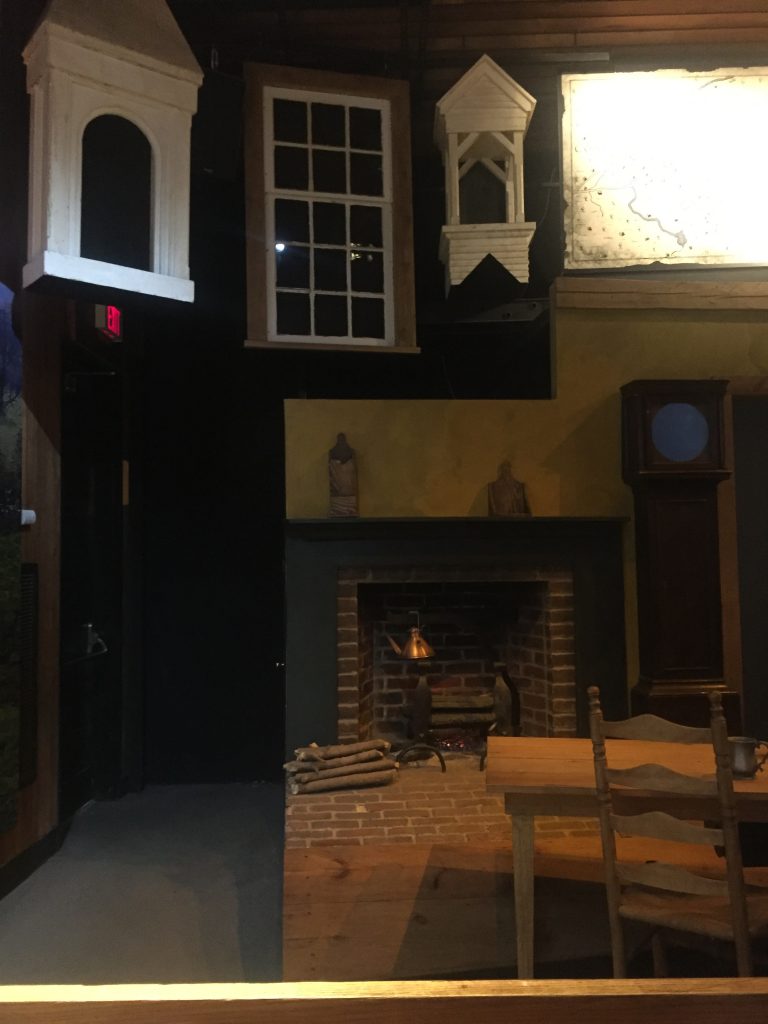
The next time I see the Editor I pretend not to. She makes as though to hitchhike, standing on the side of the highway with a woozy thumb in the air and a smile on her face. There is other traffic on the road, so it’s not a complete impossibility that I miss her.
But it’s a stretch.
I frame her in the side mirror and watch to see how she’ll respond. Chasing me will mean finding a new mode of transport, digging up my lead, making the long trips across the country alone until she can narrow the distance. It will be a lot more work than she’s become accustomed to, a return to form.
The Editor watches me for a short time, thinking I’ll stop or turn around or maybe just staring in disbelief at her bad luck. When she is hardly a dot in the glass she does it again- she turns the gun on herself.
How many of these women have appeared in morgues now? Has it happened in the same state twice? The Editor is wasting away. I don’t know whether it’s safer to travel with her, to keep her alive for as long as possible, or to travel alone, knowing each iteration is less stable than the last. I’ll have a few days to decide.
‘The modern tourist hardly dwells on the implications of a missile silo, hidden in the earth, as it is, like the upturned barrel of a gun. The system is designed to ease the mind of the normal fears one might experience when considering the country’s devastating power, placed their like a baseball bat near the door. We are allowed to know so little about them, allowed to think so little of what might happen if they were ever to be activated- so little can be said about the modern silos that it’s difficult to think anything about them at all, to even imagine they are really down there. We are told that most are decoys- that this is doubly true for those in our region. They are only scary when considered carefully.
The physical reality of the missile silo manifests in kind. They look like nothing from a distance, like a defunct pumphouse or an abandoned construction site from the road. The details surface only when one ventures past the curb. There can we see that the fences are sturdy and well-maintained and possibly electrified. There can we see the bootprints in the dust, the signs that warn strangers away and quote esoteric government codes with vague and violent consequences. There we can feel the weight of these things, the seriousness with which they should be taken.
‘The Open Silo’ does all it can to inspire this fear in its visitors without the potential for government interference. It claims to be a reconstruction above-ground of what is usually concealed below and it stands like a discarded shotgun shell, upright in the desert sun. Its features include the testimonies of those who have seen war in their homeland, accompanied by detailed specifications of the weaponry used to reshape their country. There is a library called ‘The Dire Conclusions to War,’ that details a thousand possible consequences of launching these missiles in the modern day, the entries there ranging from anti-war poetry to careful, scientific forecasting. There is a haunted village just outside, designed to replicate what life might be like after the nuclear storm finally arrives. It would be a gimmick if not for the seriousness with which it attempts this portrayal. It pulls no punches.
‘The Open Silo’ doesn’t do its job very well. The human mind can imagine the horror of war only after having experienced it firsthand. Its visitors (and there are few of them) can only ever be of two crowds- those who already know, and those who cannot.’
I don’t understand this woman. I don’t know which inconveniences she can live with and which will send her running for the grave. I don’t understand why the pistol is a factor in the Editor’s infinity- whether it’s the force that carves her path, or the forest that seeks to reclaim it.
-traveler
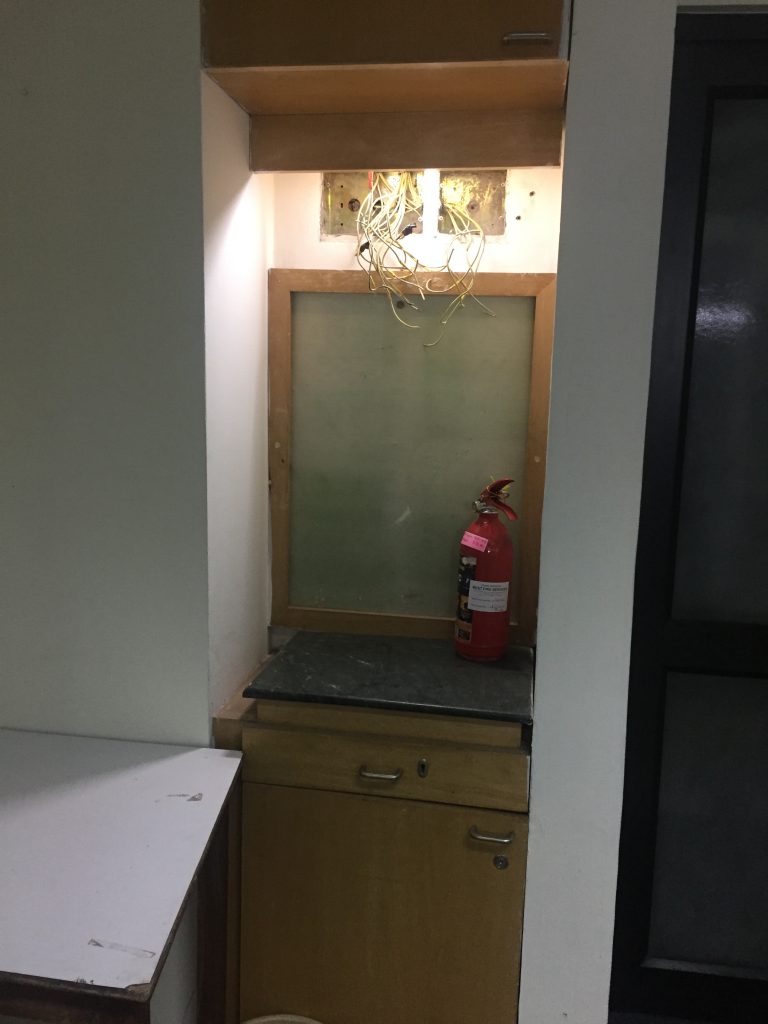
‘A certain small-scale hell exists in the form of a park bench along the Wayside. Provided, undoubtedly, with good intentions- cut with clean lines from American wood and polished to a sheen- the bench has lived out its better days in a single season of use and now decomposes, angrily, in the sun. The winter has sucked the finish from the bench and its planks have bristled, becoming ragged and splintery and light as volcanic rock.
‘The Park Bench Hell’ is nature’s mild protest at the ruthlessness of American infrastructure, at the thick asphalt scabs that itch under the summer’s heat, at being condemned to road verges and medians. It is the inflammation around a wound, the body’s cure-all reflex to perceived infection, making the once-welcoming environment not barren, exactly, but certainly inconvenient to the would-be malignance.
Hold no doubts, reader, the nature on the side of the road does not want you to enjoy it. Every blade of course, brown grass hidden among the greenery is a reminder to keep your shoes on. The ants that emerge under your dirty jeans arrive to keep you from sitting. The carefully placed bird shit, the strange stinging insects, the staleness of your sandwich just seconds after it meets the outside air- this is nature declaring it is capable of ruining a human the same way it ruins park benches, through a thousand miniature violences and infinite time.’
“Fuck.”
The Editor pulls her arm back quickly, yanks her shirtsleeve down over her elbow. She’s opened a bag of potato chips and stripped the plastic from a gas-station ham and cheese. She hasn’t touched either, choosing, instead, to become deeply angry at my assertion that pre-popped popcorn is stale out of the bag, no matter the brand.
“What is it?” I ask, holding out a hand to steady her arm.
She pulls out of my reach and examines her skin.
“Splinter,” she says, “I hate these things.”
“I think my knife has a pair of tweezers,” I say, but the Editor shoots herself and slumps forward into her abandoned lunch.
Blood pours between the slats of the table and across my jeans as I struggle to extricate myself from the bench. I throw up in the grass.
-traveler
© 2024 · Dylan Bach // Sun Logo - Jessica Hayworth